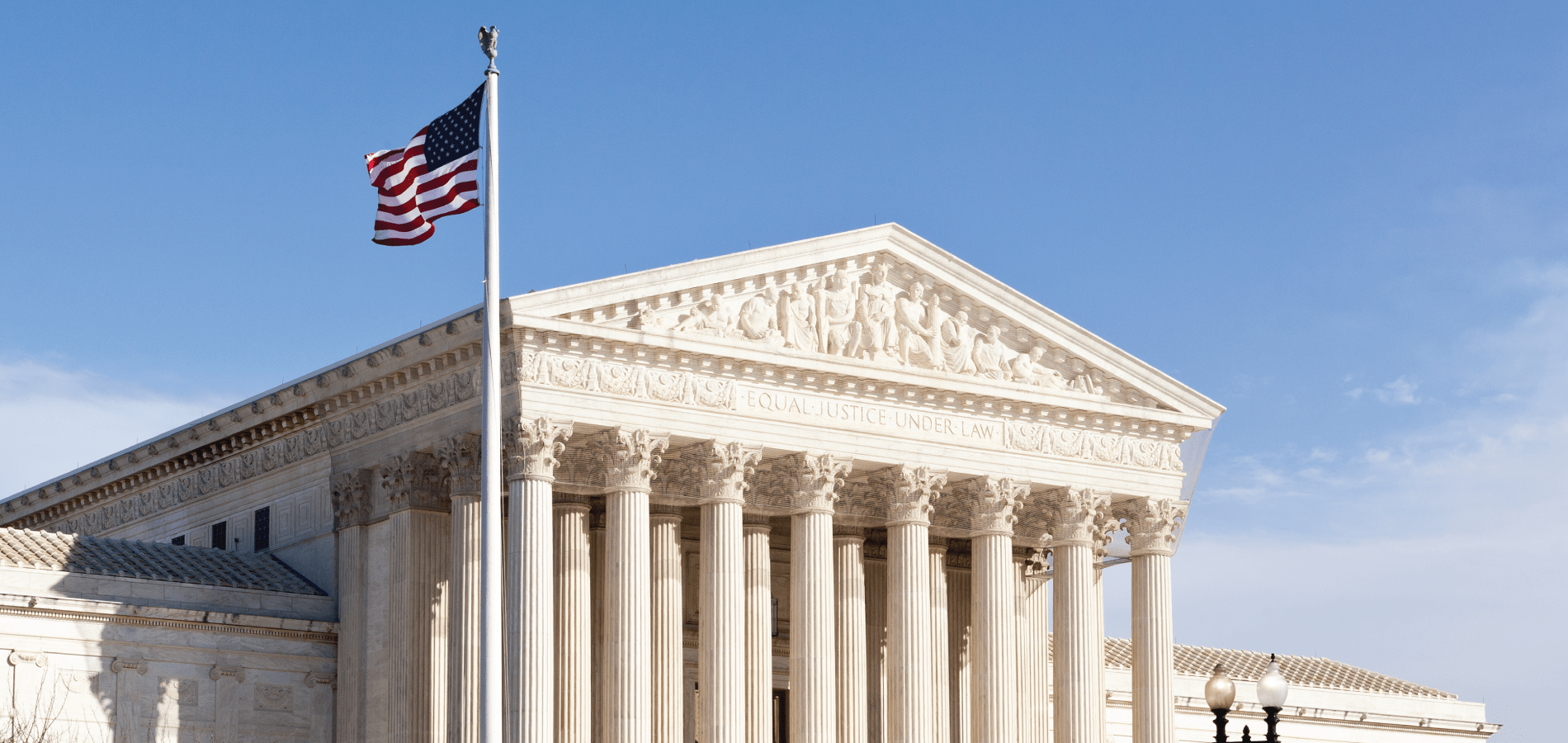The Supreme Court was certainly busy during the last month of its 2021-2022 term. Several major decisions, many of which went against Court precedents, shocked Americans across the political spectrum. It’s easy to research these cases in HeinOnline, where we have several databases dedicated to case law. You can check out the U.S. Supreme Court Library for official reports, CRS reports, and so much more. Additionally, we offer a database version of the ABA’s Preview of United States Supreme Court Cases, which provides helpful summaries on upcoming cases on the Court docket, as well as case summaries in the last term issue. Plus, HeinOnline partners with Fastcase to provide federal and state case law content.
Below is a summary of some of the most notorious cases decided in June, as well as additional resources that you can check out in HeinOnline.
1. West Virginia v. Environmental Protection Agency
Issue: Environmental law and climate change
Opinion Date: June 30, 2022
Vote: 6-3
Where the Justices Stand:
- Chief Justice Roberts wrote the opinion
- Justice Gorsuch filed a concurring opinion, which Alito joined
- Justice Kagan filed a dissenting opinion that Breyer and Sotomayor joined
Case Summary:
This case limited the Environmental Protection Agency’s (EPA) ability to enforce regulations across the energy sector. The Court ruled that based on Section 111(d) of the Clean Air Act,[1]To amend the Clean Air Act to provide for a more effective program to improve the quality of the Nation’s air., Public Law 91-604, 91 Congress. 84 Stat. 1676 (1970). This document can be found in HeinOnline’s U.S. Statutes at Large … Continue reading the EPA did not have the Congress-enabled authority to establish emissions caps, based on the generation-shifting approach—meaning shifting electricity sources from coal to renewable resources such as natural gas, wind and solar— that the agency had taken on in the Clean Power Plan.[2]Administration of Barack Obama, 2015 Remarks Announcing the Environmental Protection Agency’s Clean Power Plan , Daily Comp. Pres. Docs. 1 (2015). This document can be found in HeinOnline’s Federal Register Library.
2. Biden v. Texas
Issue: Immigration
Opinion Date: June 30, 2022
Vote: 5-4
Where the Justices Stand:
- Chief Justice Roberts wrote the opinion
- Justice Kavanaugh filed a concurring opinion
- Justice Alito filed a dissenting opinion, which Justices Thomas and Gorsuch joined
- Justice Barrett filed a separate dissenting opinion, which Justices Thomas, Alito, and Gorsuch joined
Case Summary:
The Trump administration had enacted the Migrant Protection Protocols (MPP)[3]1 1 (November 15, 2019) Processing Aliens at the U.S.-Mexico Border: Recent Policy Changes. This document can be found in HeinOnline’s U.S. Congressional Documents database. program, which required certain asylum-seeking noncitizens to return to Mexico during their immigration court proceedings. In this case, the Supreme Court ruled that the Department of Homeland Security under the Biden administration has the authority to end this program.
3. Oklahoma v. Castro-Huerta
Issue: Indian sovereignty
Opinion Date: June 29, 2022
Vote: 5-4
Where the Justices Stand:
- Justice Kavanaugh wrote the opinion
- Justice Gorsuch filed a dissenting opinion, which Justices Breyer, Sotomayor, and Kagan joined
Case Summary:
A non-Indian father was convicted of child neglect of his daughter, who is a member of the Eastern Band of Cherokee Indians. Initially, the charges were dismissed because the crime occurred in Indian Country, and according to precedents on maintaining Indian sovereignty (such as the case McGirt v. Oklahoma in 2020), only the federal government or Indian authorities can prosecute crimes that occur within Indian territory. However, the Supreme Court ruled that state authorities can prosecute non-Indians who commit crimes against Indians while on reservations.
4. Kennedy v. Bremerton School District
Issue: First Amendment and religious freedom
Opinion Date: June 27, 2022
Vote: 6-3
Where the Justices Stand:
- Justice Gorsuch wrote the opinion
- Justices Thomas and Alito filed concurring opinions
- Justice Sotomayor filed a dissenting opinion, which Justices Breyer and Kagan joined
Case Summary:
A high school football coach in Bremerton School District in Bremerton, Washington, had a practice of praying with students during and after football games. The district requested that he stop doing this in order to protect the school from a lawsuit. The coach refused to do so, and the district suspended him. He then sued the district for violating his First Amendment rights[4]. 1 Stat. 97 (1789). This document can be found in HeinOnline’s U.S. Statutes at Large database. and Title VII of the Civil Rights Act of 1964.[5]To enforce the constitutional right to vote, to confer jurisdiction upon the district courts of the United States to provide injunctive relief against discrimination in public accommodations, to authorize the Attorney General to institute suits to … Continue reading The Supreme Court ruled that the coach had the constitutional right to pray at football games.
5. Dobbs v. Jackson Women’s Health Organization
Issue: Abortion rights
Opinion Date: June 24, 2022
Vote: 6-3
Where the Justices Stand:
- Justice Alito wrote the opinion
- Justices Thomas, Kavanaugh, and Roberts each filed concurring opinions
- Breyer, Sotomayor, and Kagan filed a dissenting opinion
Case Summary:
Jackson Women’s Health Organization, the only licensed abortion clinic in Mississippi, challenged a state law, the Gestational Age Act, that would ban most abortions after 15 weeks. The Supreme Court ruled that this law was constitutional, and that the Constitution does not mention abortion nor is it a guaranteed right. This ruling effectively reversed Roe v. Wade[6]Roe et al. v. Wade, District Attorney of Dallas County, 410 U.S. 113, 178 (1973). This document can found in HeinOnline’s U.S. Supreme Court Library. and ended federal protection of abortion rights, leaving the issue to states to resolve.
Learn more about this decision with our dedicated blog post.
6. New York State Rifle & Pistol Association v. Bruen
Issue: Gun control
Opinion Date: June 23, 2022
Vote: 6-3
Where the Justices Stand:
- Justice Thomas filed the opinion
- Justices Alito and Barrett filed concurring opinions
- Justice Kavanaugh filed a concurring opinion that Justice Roberts joined
- Justice Breyer filed a dissenting opinion that Justices Sotomayor and Kagan joined
Case Summary:
New York State had a law in place that required a person to demonstrate a need for self-protection in order to receive concealed carry permission for outside of the home.[7]1913 vol. III 1627 . This document can be found in HeinOnline’s Session Laws Library. Two people who were refused concealed carry privileges then challenged the law. The Supreme Court ruled that any states requiring special permissions for concealed carry were violating the Fourteenth Amendment[8]Amendatory treaty to the treaty of June 9, 1863, between the United States of America and the Nez Perce Tribe of Indians, . 15 Stat. 693 (1868). This document can be found in HeinOnline’s U.S. Statutes at Large database. by preventing citizens with self-defense needs from exercising their Second Amendment rights.[9]. 1 Stat. 97 (1789). This document can be found in HeinOnline’s U.S. Statutes at Large database.
In response, states such as New York are looking to pass alternative gun control regulations.
Be sure to subscribe to the HeinOnline Blog for news and updates regarding the Supreme Court and so much more!
HeinOnline Sources[+]
| ↑1 | To amend the Clean Air Act to provide for a more effective program to improve the quality of the Nation’s air., Public Law 91-604, 91 Congress. 84 Stat. 1676 (1970). This document can be found in HeinOnline’s U.S. Statutes at Large database. |
|---|---|
| ↑2 | Administration of Barack Obama, 2015 Remarks Announcing the Environmental Protection Agency’s Clean Power Plan , Daily Comp. Pres. Docs. 1 (2015). This document can be found in HeinOnline’s Federal Register Library. |
| ↑3 | 1 1 (November 15, 2019) Processing Aliens at the U.S.-Mexico Border: Recent Policy Changes. This document can be found in HeinOnline’s U.S. Congressional Documents database. |
| ↑4, ↑9 | . 1 Stat. 97 (1789). This document can be found in HeinOnline’s U.S. Statutes at Large database. |
| ↑5 | To enforce the constitutional right to vote, to confer jurisdiction upon the district courts of the United States to provide injunctive relief against discrimination in public accommodations, to authorize the Attorney General to institute suits to protect constitutional rights in public facilities and public education, to extend the Commission on Civil Rights, to prevent discrimination in federally assisted programs, to establish a Commission on Equal Employment Opportunity, and for other purposes., Public Law 88-352, 88 Congress. 78 Stat. 241 (1964). This document can be found in HeinOnline’s U.S. Statutes at Large database. |
| ↑6 | Roe et al. v. Wade, District Attorney of Dallas County, 410 U.S. 113, 178 (1973). This document can found in HeinOnline’s U.S. Supreme Court Library. |
| ↑7 | 1913 vol. III 1627 . This document can be found in HeinOnline’s Session Laws Library. |
| ↑8 | Amendatory treaty to the treaty of June 9, 1863, between the United States of America and the Nez Perce Tribe of Indians, . 15 Stat. 693 (1868). This document can be found in HeinOnline’s U.S. Statutes at Large database. |



